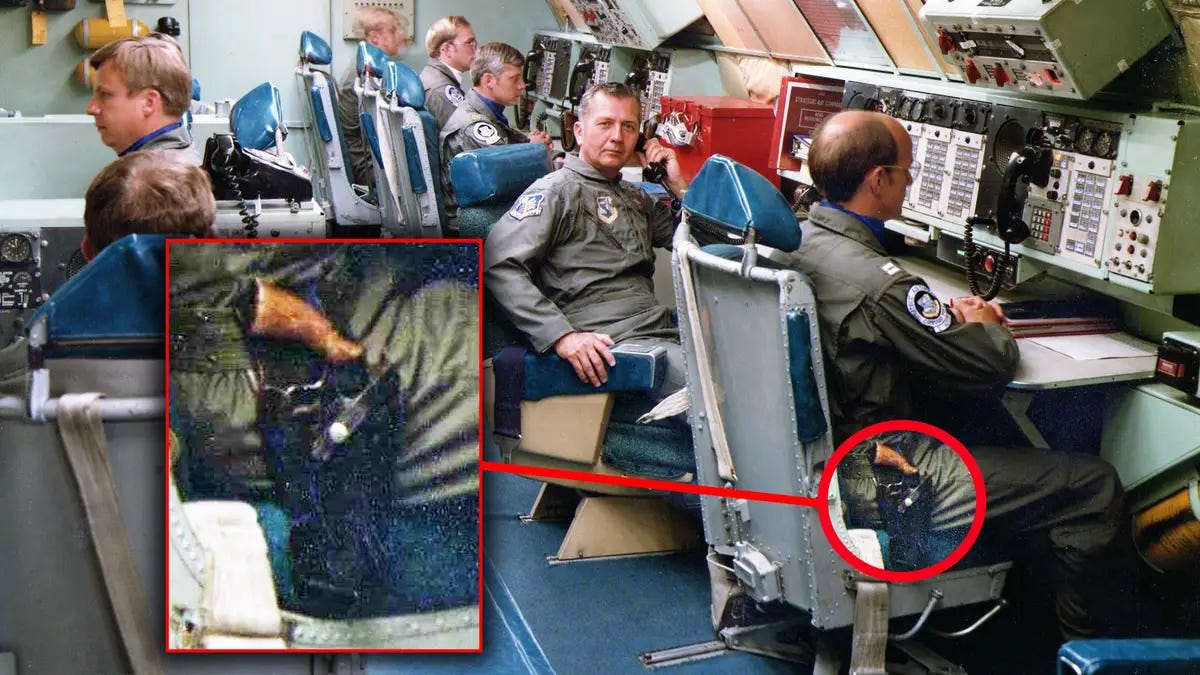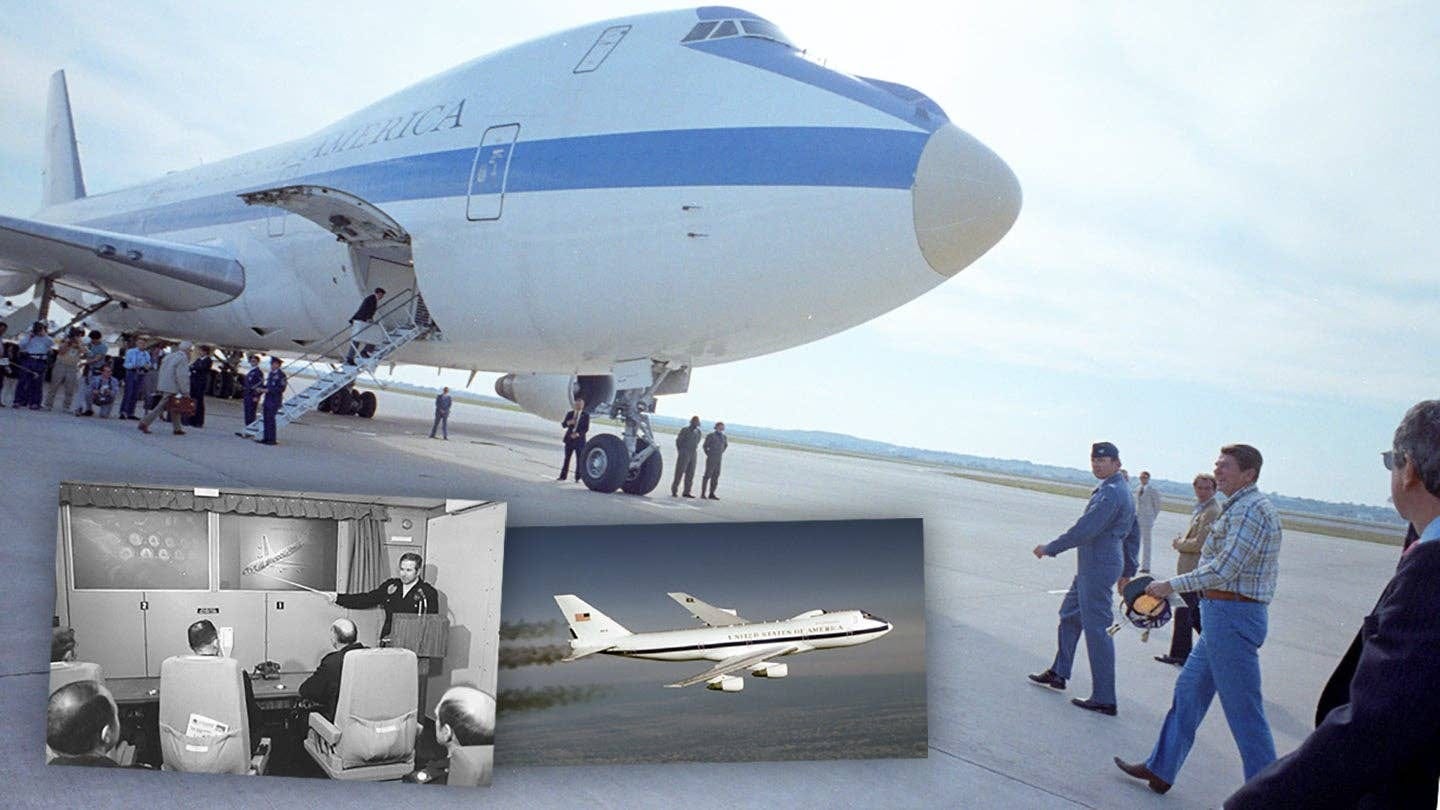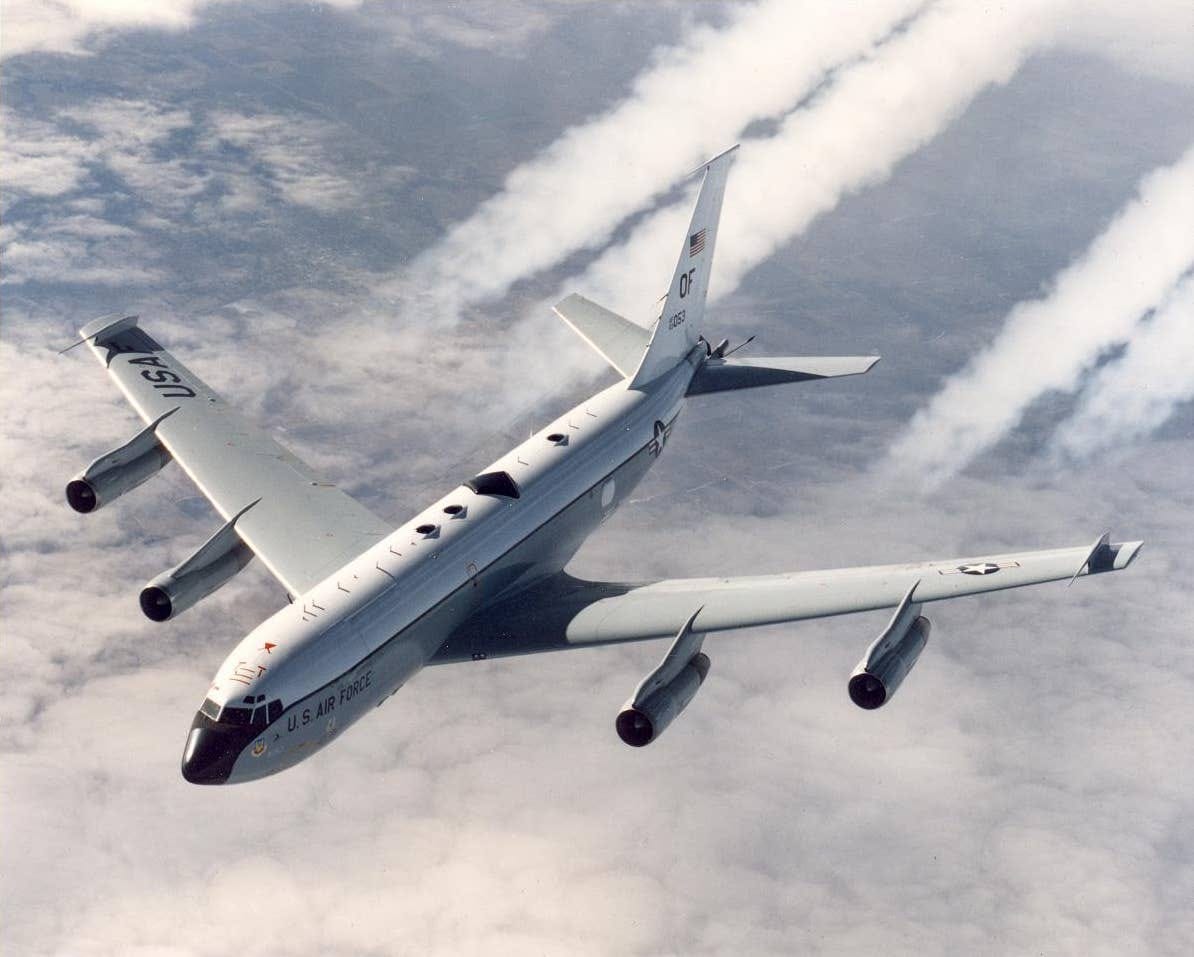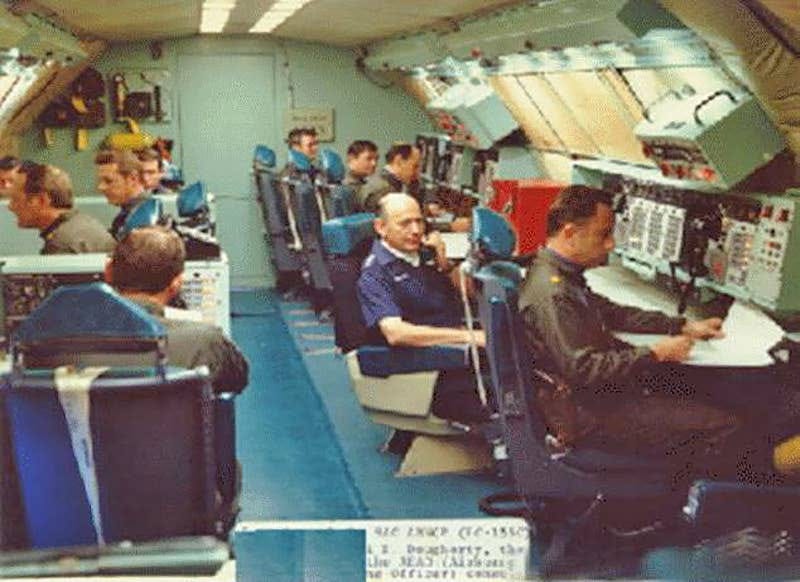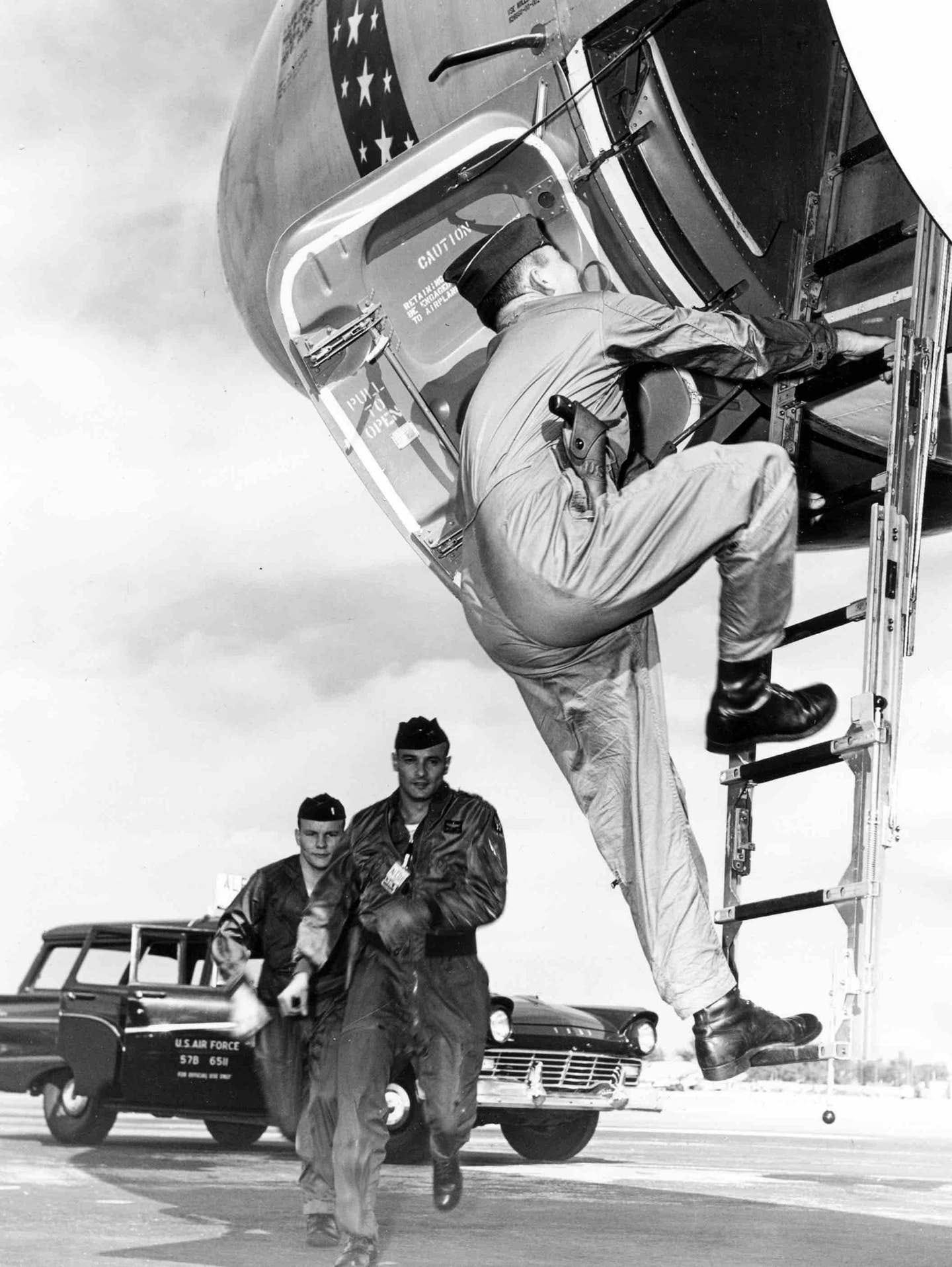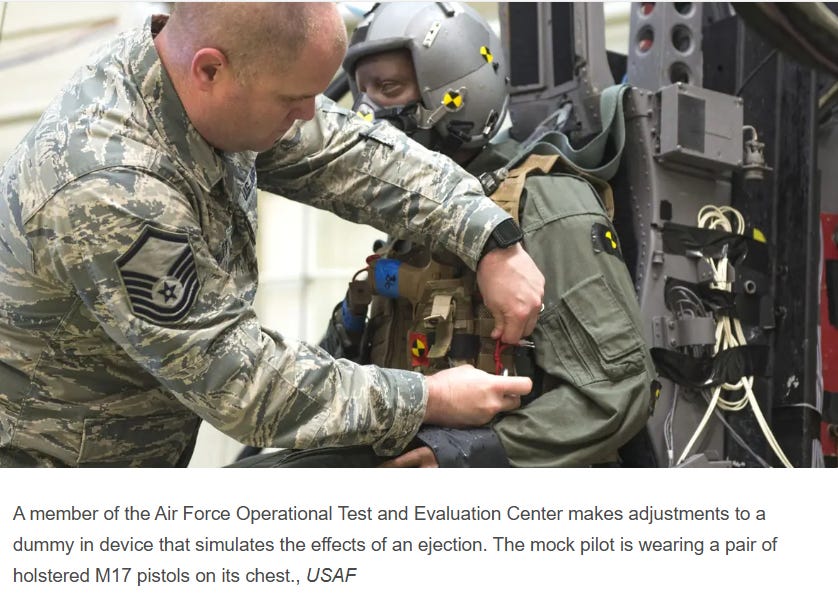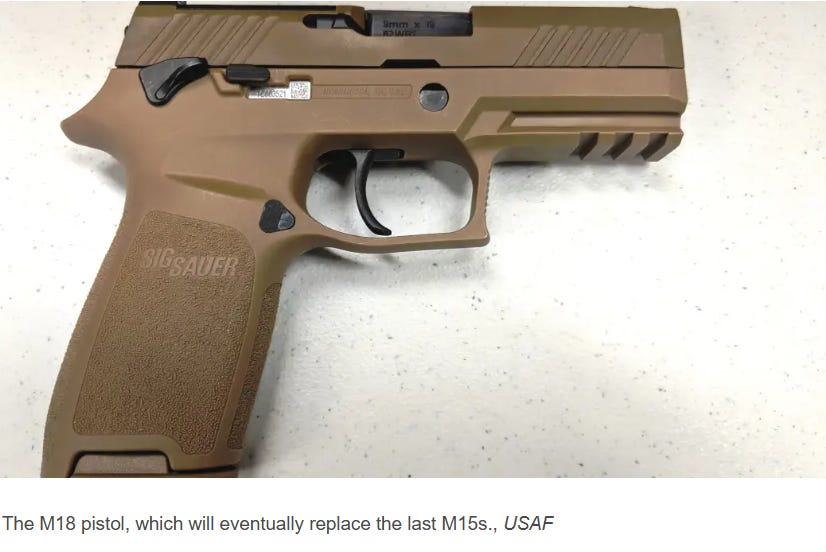Why An Officer On EC-135C Doomsday Planes Packed A Revolver
While it may seem like a fictional detail from a Cold War thriller, select crew did pack pistols aboard Air Force Looking Glass jets.
May 24, 2024
The Pentagon's 'doomsday planes' are always fascinating topics.
President Ronald Reagan about to board an E-4A. , Ronald Reagan Presidential Library
We explore the relationship between presidents and the Air Force’s flying command posts that are meant to carry them into Armageddon.
These airborne command posts convey the orders that could bring about armageddon and can do so even after parts of the United States become the home of towering mushroom clouds, powerful electromagnetic pulses, intense firestorms, and blinding flashes of light.
During the Cold War, the U.S. military's Airborne Launch Control Center (ALCC) mission, dubbed Operation Looking Glass, was of the utmost strategic imperative.
If the orders couldn't be given to launch the country's intercontinental ballistic missiles (ICBMs), even as a strike on the United States was in progress or had already occurred, the nuclear deterrent becomes, well, far less of a deterrent.
The USAF's fleet of EC-135C ALCC aircraft served to mitigate this weakness, and onboard, at least for some of their existence, was a revolver-packing officer... just in case.
Historic images from within the electromagnetically hardened and highly-missionized cabin of the EC-135C show an officer in the rear right crew position with a sidearm on his hip.
Considering this is inside the pressurized cabin of a high-flying C-135 derivative that launched from a highly secure based and filled with other airmen with security clearances, the sidearm seems like a bizarre addition.
Robert Hopkins, an accomplished C-135 flyer himself and aviation historian who wrote, among other books, the 'bible' on the C-135 and its many variants, explains to The War Zone that this was indeed a security measure aboard the EC-135C for a period of time:
"Yes. Comm Officer and Ops Officer were custodians of one key plus all the SIOP material. It changed over time, but the original argument was to protect access to either of these from rogue crew members.
B-47/ICBM crews carried them for a while, too. Also, the Emergency Actions NCO was responsible for collecting SIOP docs from SAC underground, and the Comm Officer had all the codes, so were armed during ground transport of materials to/from aircraft."
Looking Glass missions first began being flown in 1961, though the more tailored EC-135Cs wouldn't join the service until a few years later.
During the type's career, one was always airborne, 24 hours a day, up until July of 1990, which is an incredible feat.
For the eight years that followed, the EC-135Cs continued to serve, flying regular missions and sitting ground alert, until the type was finally retired in 1998.
Its watch was primarily assumed by the Navy's E-6B Mercury, which combined the Looking Glass mission along with the Navy's Take Charge And Move Out (TACAMO) submarine-launched ballistic missile command and control functions.
Still, the EC-135C will always have a special place in pop culture as the original doomsday plane and after, including starring in movies like By Dawn's Early Light.
While it may seem like having armed officers aboard such a plane would be something out of a fictional thriller, it was very much a real thing during the heady days of the Cold War.
The USAF Is Finally Ditching the Last of Its Cold War Revolvers for New Semi-Auto Pistols
The iconic Smith & Wesson six-shooters are still in use after more than six decades of service.
The U.S. Air Force says it will finally replace the very last of its .38 Special caliber M15 revolvers with the compact variant of the U.S. Army’s new 9mm Modular Handgun System pistol, the M18.
This will bring the service’s history with the six-shooters, once the primary sidearm of its military police elements, a title it held for more than 30 years, to an end for good.
READ MORE:




